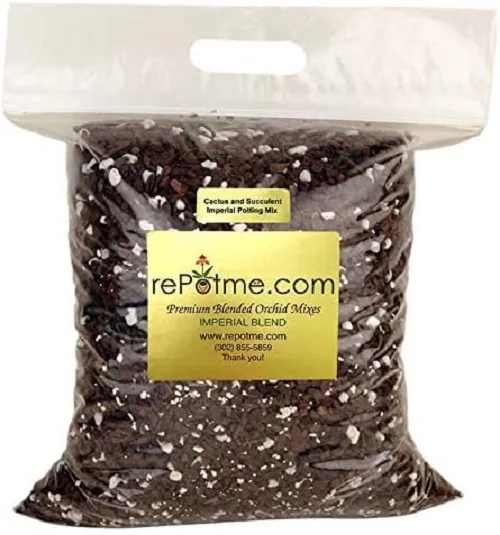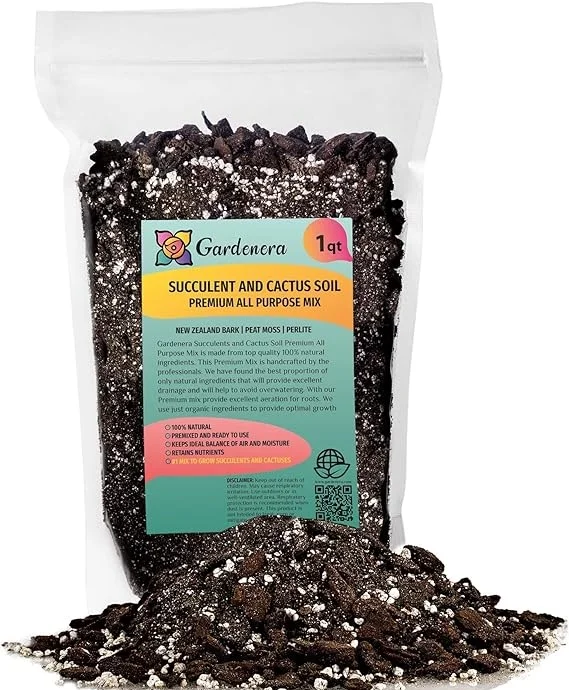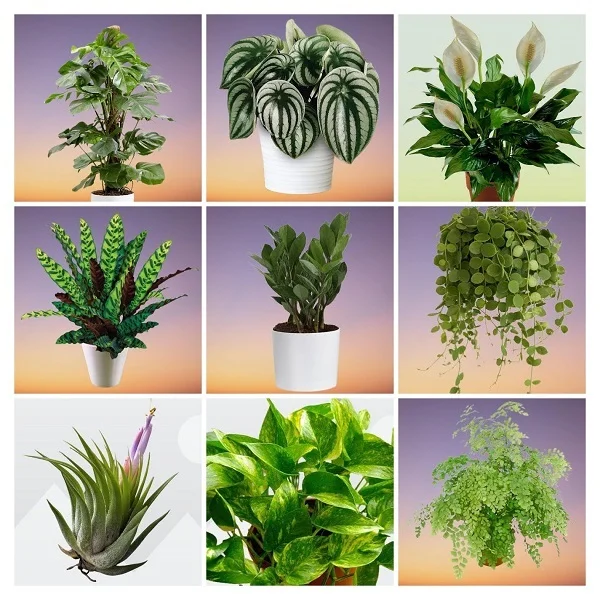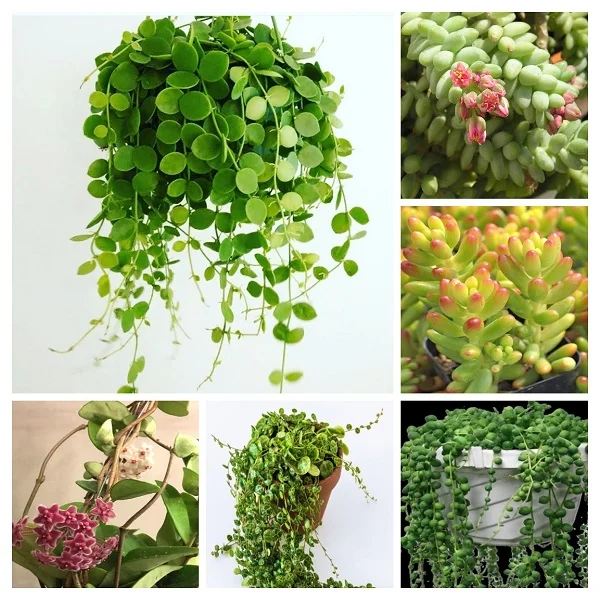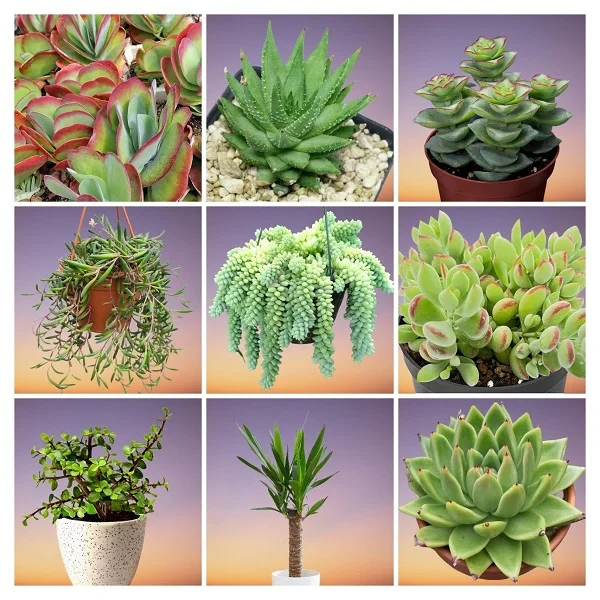Jade Plant (Crassula ovata) Indoor Care, Propagation, Common Problems and Solutions
Some links in this post may be affiliate links
Jade Plant (Crassula ovata) blossoms in bright light with some direct sunlight, average warmth, moderate humidity and moderately moist, rich, well-drained, succulents soil coupled with monthly feeding in the growing season.
Crassula ovata is one of the popular succulent plants that can withstand a great deal of neglect and mismanagement and is easy to grow even for a beginner.
Jade Plant can survive a considerable period of time without water due to the fleshy leaves and stems which store water and allow the plant to go for a considerably long period without being watered. This places this plant among the best plants with low water needs.
Crassula ovata is one of the evergreen, herbaceous Crassula plants varieties with thick branches and thick, shiny and smooth leaves which grow in opposite pairs along the branch.
The leaves are usually yellowish-green but may develop red edges in some varieties when exposed to very bright light which makes this plant one of the sun-loving plants for the home.
If grown under intense hot sun, the green leaf color will be lost and replaced by yellow color. The yellow color is due to the plant making pigments such as carotenoids to protect itself from harsh sunlight and ultraviolet rays.
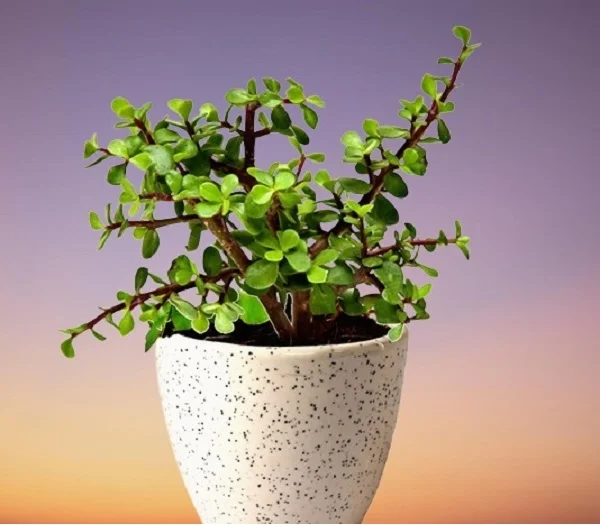
Botanical name: Crassula ovata
Synonym: Crassula argentea
Family: Crassulaceae
Subfamily: Crassuloideae
Common name: Jade Plant
Origin
Crassula ovata also called Crassula argentea is native to KwaZulu-Natal and Eastern Cape provinces of South Africa and Mozambique.
Size
Jade Plant grows upright and rounded, and can reach a height of 8 feet. Numerous varieties of Jade Plant have been developed like Hummel's Sunset among others.
Air Cleaning
Crassula ovata produces high levels of oxygen at night. Jade plant is a CAM (Crassulacean Acid Metabolism) plant. CAM plants are plants that harvest Carbon dioxide at night and use it during the day to make their food.
As they make their food, CAM plants store the oxygen they produce in the process and release it at night. This is an adaptation of CAM plants to their drought-prone climate which enables then to survive the harsh climate.
Toxicity
Crassula ovata or Crassula argentea is toxic to both humans and pets as indicated by ASPCA. If ingested it can cause nausea, vomiting and diarrhea. Keep the plant away from the reach of children and pets.
Where to Buy
Are you looking to add Jade Plants to your plant collection? You may acquire pretty Crassula ovata online from Etsy (Link to Etsy) or from Amazon (Link to Amazon).
Crassula ovata Care Indoors
Jade Plant (Crassula ovata) prospers in bright light with 4-6 hours of direct sunlight, average warmth of 15-260C , moderate humidity of 50-55% and moderately moist, fertile, well-drained, succulents soil coupled with monthly feeding during the growing season.
Crassula ovata requires repotting only when pot-bound. Pruning is necessary to keep the plant neat, to discourage pest and disease infestations and to rejuvenate growth. Keep reading for more on these growing conditions and how to provide them.

Watering
Water Jade Plant liberally during the growing season and allow the top half of soil to dry out between waterings to keep the soil moderately moist. Decrease watering during the cold period to maintain the soil barely moist but do not let it dry out completely.
Use water that is at room temperature to water the plant to avoid shocking this tropical plant which can cause sudden leaf loss.
Ascertain that the pot has a drainage hole to prevent the plant from sitting in soggy soil as it can result in root-rot. Take care not to wet the foliage as it can result in fungal diseases or water from the bottom instead.
Light Requirements
Jade Plant grows best in bright light with about 4-6 hours of morning or afternoon direct sunlight. Keep it away from too hot direct sunshine to prevent scorching of the leaves.
If the light is not adequate, the plant will grow leggy with weak stems, wide spaces between the leaves and small leaves. Therefore, where the natural lighting is insufficuent, consider investing in a grow light to supplement it. Check out this link to Amazon for full spectrum grow lights.
Rotate the pot regularly to ensure that the plant receives light on all sides for uniform growth and to prevent lopsided growth.
If you choose to take the Crassula ovata outdoors, gradually acclimate it and place it in a shaded place to avoid scorching the leaves.
Temperature and Humidity
Average warmth of 15-260C during the growing season is ideal for Jade Plant. Room temperatures that are comfortable for you are ideal for this succulent. Keep it away from cold drafts like windy windows and doors.
Average room humidity of 50-55% is ideal for Crassula ovata. It has no need for extra humidity. Regularly clean the leaves by damp-wiping with a soft cloth. Take care not to damage the fragile leaves.Make sure that there is good air circulation to prevent fungal disease infestations which are promoted by damp still air.
Fertilizer
Feed Jade Plant monthly during the growing season with a balanced, liquid fertilizer for lush growth. Take care not to overfeed as the plant is not a heavy feeder. Do not feed in the dormancy stage (cold season) as growth is minimal at this time and feeding at this time can cause fertilizer burn.
Potting Mix
The best soil for Jade Plant should be rich in organic matter, loose and free-draining to avoid getting soggy soil. The soil should be loose enough to allow water to drain out fast enough. Cactus and succulents mix is ideal as it allows water to drain easily and does not hold excessive amounts of water.
Repotting
Repot Jade Plant at the beginning of the growing season only when it becomes crowded in its current pot. Use a pot that is only one size larger than the current one.
Ensure that the pot has a drainage hole to prevent the soil from getting soggy as it can lead to root-rot. Use a clay pot for Crassula ovata. A clay pot is porous and therefore allows the soil to dry out faster which prevents it from staying wet for too long. Take a look at these terracotta pots with saucer on Amazon.
Pruning
Pruning Jade Plant involves removal of any dead or diseased leaves to keep it neat and also reduce pest and disease infestations. Cutback the bare stems at the beginning of the growing season to rejuvenate growth.
Propagation
Jade Plant (Crassula ovata) can be propagated at the beginning of the growing season from offsets, leaf cuttings or stem cuttings.
How to propagate Jade Plant from offsets
Carefully seperate the offset from the mother Jade Plant by cutting with a sharp knife while ensuring that the offset has adequate roots.
Pot the offset in its individual pot in moist, cactus and succulents soil and place in a warm, well-lit place away from direct sunlight.
Maintain the soil moist through out until the new Crassula argentea is well established after which you can begin routine care.
How to propagate Jade Plant from leaf cuttings
Take Jade Plant leaf cuttings complete with the petiole. Allow the leaf cutting to dry out (callus) for a few days to prevent rotting.
Once calloussed, lay the leaf cutting on moist, free-draining, rooting mix while ensuring that the leaf leaf surface comes into contact with the soil.
Place the set up in a warm, well-lit place and maintain the soil moist until there is new growth from the base of the leaf cuttings.
Allow substancial growth before transplanting the new Crassula ovata after which routine care can begin.
How to propagate Jade Plant from stem cuttings
Take 3-5 inches stem cuttings from a healthy Jade Plant and allow the cutting to dry out (callus) for a few days.
Once callused, insert the lower cut end of the stem cuttings in moist, well-drained, rooting soil.
Place the set up in a well-lit, warm place and maintain the soil moist until the stem cuttings are rooted. Rooting may take about 4 weeks.
Allow substancial growth before transplanting the new Crassula ovata after which routine care can begin.
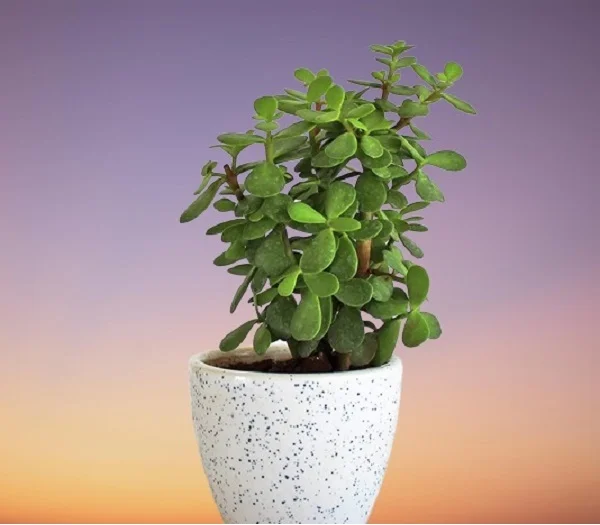
Crassula ovata Common Problems
Jade Plant (Crassula ovata) growing problems include leaf drop, leggy growth, leaf spots, wilting, pests and diseases among others. Keep reading for more on these problems and how to fix them.
Diseases
Jade Plant is prone to powdery mildew and black leg disease which are prevalent in overwet conditions coupled with poor air circulation. Isolate the affected plant to reduce spread to other houseplants. Improve ventilation and ensure there is free air circulation at all times.
Water the Crassula ovata from the bottom to avoid wetting the leaves and always allow the top half of soil to dry out between waterings. Maintain the soil moderately moist during the growing season and barely moist in the cold period.
Do not allow the plant to sit in soggy soil and make sure that the pot has a drainage hole and the soil is free-draining to prevent it from getting soggy.
Brown soft leaf spots
Brown soft spots in Jade Plant are caused by leaf spot disease which is promoted by poor air circulation coupled with wetting of the leaves during watering. Improve ventilation and ensure there is free air circulation at all times and water the plant from the bottom to avoid wetting the leaves.
Pests
The common pests in Jade Plant are scale insects, mealy bugs and spider mites. Isolate the affected plant to reduce spread to other houseplants. Spray the plant with a solution of 4 parts water to 1 part rubbing alcohol to get rid of the pests. Make sure to cover the entire plant.
Elongated stems or leggy growth
Elongated stems or leggy growth in Jade Plant is due to two possible reasons. One possible reason is too much water during the cold season. Cut down on watering during the cold season to keep the soil barely moist as growth is reduced at this time. In addition, ensure that the pot has a drainage hole and the soil is free-draining to prevent it from retaining too much water.
The second possible reason for elongated stems or leggy growth in Crassula ovata is too little light during the growing season. Ensure that the plant is receiving very bright light with 4-6 hours of direct sunlight during the growing season or instal a grow light if the natural lighting is not enough.
Sudden leaf loss (drop)
Sudden leaf loss in Jade Plant is due to two possible causes. One possible cause is watering the plant with very cold water which results in plant shock. Use water that is at room temperature to water the plant to avoid shocking this tropical plant.
The second possible cause of sudden leaf drop in Crassula ovata is underwatering which results in too little water in the soil. As such, the plant cannot obtain enough water to take up to the leaves for food making. In a bid to save energy, the plant drops the leaves.
To prevent leaf drop, water the plant thoroughly during the growing season and allow the top half of soil to dry out between waterings to keep the soil moderately moist. Significantly reduce watering in the cold season but never allow the soil ball to dry out completely.
Brown dry spots
Brown dry spots in Jade Plant are due to underwatering during the growing season as the plant requires that the soil be maintained moderately moist through out. Water the plant thoroughly during the hot period while allowing the top half of soil to dry out between waterings but do not allow it to dry out completely.
Wilted and discolored leaves
Wilted and discolored leaves in Jade Plant are caused by overwatering during the cold period. Reduce watering during the cold season to maintain the soil barely moist.
You liked it? Share on social media.
Related Content
Amazon Associates Disclosure
Homeplantsguide.com is a participant in the Amazon Services LLC Associates Program, an affiliate advertising program designed to provide a means for sites to earn advertising fees by advertising and linking to amazon.com.
